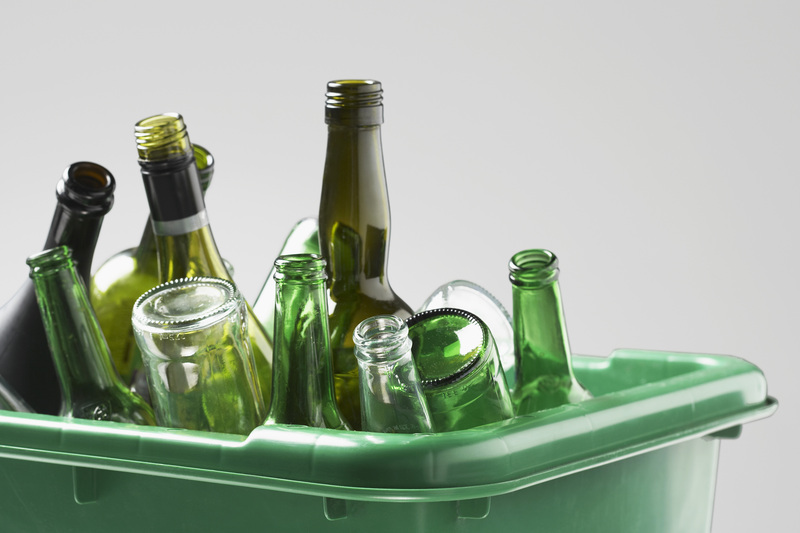Dispose of PPE Waste Without Risking Public Health: A Comprehensive Guide
The widespread use of personal protective equipment (PPE) has become the norm in recent years due to both global pandemics and heightened awareness around hygiene and workplace safety. However, while PPE such as masks, gloves, gowns, and face shields offer crucial protection, improper disposal of this waste poses significant threats to our communities and the environment. Learning how to dispose of PPE waste without risking public health is now more important than ever. This in-depth article covers best practices, risks, regulatory requirements, and actionable steps for safe and sustainable PPE waste management.
Understanding PPE Waste and Its Public Health Implications
PPE waste generally consists of single-use items like surgical masks, disposable gloves, protective gowns, face shields, as well as other gear used in medical, industrial, and domestic settings. The rise in PPE usage, particularly during health crises such as the COVID-19 pandemic, has generated an unprecedented amount of this specific waste stream.
Why the Proper Disposal of PPE Waste Matters
- Pathogen Spread: Used PPE can harbor infectious agents, contributing to the spread of diseases if not handled and disposed of correctly.
- Environmental Pollution: Many PPE materials are non-biodegradable, leading to long-term pollution of land and waterways.
- Wildlife Hazards: Discarded gloves and masks can entangle, choke, or poison animals in terrestrial and marine environments.
- Human Health Risks: Improper handling exposes waste pickers, sanitation workers, and the general public to potential infections and toxins.
Effectively managing this type of waste protects not only people, but also our environment.

Types of PPE and Associated Waste Concerns
Before reviewing how to dispose of PPE waste without risking public health, it's essential to understand the specific types of PPE items and their disposal challenges:
Masks and Respirators
- Made from layers of plastics such as polypropylene
- Potentially contaminated with respiratory secretions and pathogens
Gloves
- Latex, nitrile, vinyl, or polyethylene
- May contain contaminants from surfaces touched
Gowns and Aprons
- Disposable or reusable; often non-woven plastics or cloth
- Usually contaminated after medical use
Face Shields, Goggles, and Other Equipment
- Tough, non-biodegradable plastics
- Difficult to recycle due to mixed materials and contamination
The Dangers of Improper PPE Waste Disposal
Unregulated or careless disposal of PPE waste can have far-reaching consequences:
- Spread of Infectious Diseases: When discarded in regular waste or public spaces, used PPE can act as a transmission vector for viruses, bacteria, and fungi.
- Environmental Degradation: Plastic-based PPE can take hundreds of years to decompose and can release toxic microplastics into ecosystems.
- Blockages and Litter: Discarded PPE can clog sanitation systems and contribute to unsightly, hazardous litter in urban and rural landscapes.
- Risks to Workers: Sanitation workers and waste handlers face a higher chance of direct contact with hazardous waste without proper education and equipment.
Best Practices to Dispose of PPE Waste Without Risking Public Health
Whether you are a healthcare institution, employer, or concerned individual, following established procedures is the most reliable way to dispose of PPE waste safely. Here's how:
1. Source Segregation is the First Step
- Color-coded Bins: Use dedicated, clearly labelled bins for PPE waste--ideally yellow or red for infectious waste, as per most health regulations.
- Sealability: Ensure bins or bags can be securely sealed to prevent leaks or accidental contact.
- Accessibility: Place bins at points of PPE removal, such as building entrances, hospital exits, or workstations.
2. Safe Handling and Minimal Contact
- Train staff and users to remove PPE carefully, avoiding direct contact with the outer surfaces.
- Use gloves and, if possible, face protection when handling used PPE for disposal.
- Wash hands thoroughly after disposing of PPE, even if gloves were used.
3. Double-bagging and Secure Containment
- In healthcare and high-risk environments, double-bag used PPE to minimize leakage and cross-contamination.
- Do not overfill bags; tie securely before placing them in final waste collection points.
4. Follow Local and National Regulations
- Adhere to guidelines provided by CDC, WHO, and local health authorities regarding medical waste disposal.
- In many countries, PPE is considered medical or hazardous waste and must be handled accordingly.
5. Proper Transport and Final Disposal
- Only authorized personnel should transport infectious PPE waste.
- Use dedicated vehicles, ideally with sealed and disinfected compartments.
- Send PPE waste to approved incineration or autoclaving facilities where possible.
- For home and public use PPE, consult local waste services for advice on disposal procedures to avoid landfill pollution.
6. Special Handling for Reusable PPE
Reusable PPE such as cloth masks or goggles should be cleaned and disinfected according to manufacturer and health guidelines, ensuring contamination isn't carried back into the home or workplace. Never mix contaminated reusable and disposable PPE in the same waste stream.
Regulatory Standards and Guidelines for PPE Waste Disposal
Multiple organizations provide standards to dispose of PPE waste without compromising public health. Some key references include:
- World Health Organization (WHO): Offers guidelines for handling infectious and healthcare waste, including PPE. Segregation, storage, transportation, treatment, and final disposal are covered in details suitable for all facility sizes.
- Centers for Disease Control and Prevention (CDC): Advises that PPE used in clinical care of patients with viral diseases be disposed as regulated medical waste.
- Environment Protection Agencies: National guidelines address incineration standards, landfill criteria for hazardous materials, and recycling where possible.
Case Study: PPE Waste Management During COVID-19
During the COVID-19 pandemic, millions of disposable masks and gloves were distributed daily across the globe. Some cities, such as Singapore, implemented specialized PPE collection bins in high-traffic areas and public transportation hubs. These bins were sealed and labeled for incineration, reducing the risk of public contact and cross-contamination.
Conversely, locations that failed to create adequate PPE disposal systems witnessed increased community transmission rates and severe littering issues, with masks appearing in streets, parks, and water bodies.
Innovative Approaches to Sustainable PPE Waste Disposal
While incineration is the most common end-point for contaminated PPE, concerns over air quality and emissions have spurred efforts to find more sustainable solutions that also protect public health.
1. Autoclaving and Sterilization
- Heat or steam sterilization neutralizes pathogens before final disposal or even recycling.
- Suitable for some types of PPE but not all plastics can withstand high temperatures.
2. Recycling and Upcycling Opportunities
- Specialized programs now exist to process and repurpose some types of clean, non-infectious PPE, such as face shields and safety goggles.
- Researchers are developing methods to convert PPE plastics into construction materials, fuels, or even art.
However, heavily contaminated PPE should never enter traditional recycling streams to prevent public and worker exposure.
3. Biodegradable and Compostable PPE
- Innovations in materials science are bringing compostable masks and gloves to market, which can decompose safely under the right conditions.
- Such advances can reduce the environmental footprint, but these items still need to be treated as potentially infectious before final disposal.
Practical Tips for Individuals and Households
Not all PPE waste is generated in clinical settings. Individuals at home, in offices, or in public places also play a vital role in protecting public health through their disposal choices.
- Never discard PPE in open public spaces or flush down toilets.
- Bag personal PPE waste securely. Preferably use a double-bag system if you or someone in the house is ill.
- Wash hands thoroughly after handling used PPE, bags, and bins.
- Follow community guidelines--some municipalities may run specialized PPE waste collection drives.
- Educate others in your family and community about the risks of irresponsible PPE waste disposal.
The Role of Businesses and Institutions in Safe PPE Waste Disposal
Organizations that use large quantities of PPE, such as hospitals, manufacturing plants, and offices, must implement structured disposal programs:
- Conduct regular PPE waste audits to track quantities and identify areas for improvement.
- Train employees and cleaning staff on PPE removal and disposal protocols.
- Sign contracts with certified waste disposal companies for collection, treatment, and disposal.
- Display clear signage in multiple languages, highlighting proper disposal procedures.
- Report and fix inappropriate disposal such as overflowing bins or waste on floors, immediately.
Common Myths and Misconceptions About PPE Waste Disposal
- Myth: All PPE can be recycled.
Fact: Only some clean, non-contaminated types are recyclable. Most used PPE must be treated as infectious and disposed of accordingly. - Myth: PPE can simply be thrown in the regular trash.
Fact: This increases public health risks, especially in high-incidence or vulnerable areas. - Myth: Burning PPE at home is safe.
Fact: This practice releases toxic fumes and should be avoided. Only approved incineration facilities can safely handle PPE waste. - Myth: If PPE looks clean, it's harmless.
Fact: Many germs are invisible; all used PPE should be considered potentially infectious.

Future Directions: Technology and Policy Innovations
As PPE waste continues to accumulate, future strategies must balance public health protection with environmental sustainability. Emerging solutions include:
- On-site sterilization units for rapid, decentralized destruction of contaminants.
- Smart bins with fill-level and contamination sensors to optimize waste collection frequency and prevent overflows.
- Government incentives for developing recyclable or biodegradable PPE alternatives.
- Greater public education campaigns to combat misinformation and promote responsible practices.
Conclusion: Dispose of PPE Waste Without Risking Public Health
The safe and responsible disposal of PPE waste is an ongoing global challenge that demands cooperation between individuals, businesses, regulators, and innovators. By adhering to best practices--proper segregation, secure containment, adherence to guidelines, and choosing sustainable methods when available--we can protect both human health and the environment from the dangers of improper PPE waste management.
Improving our collective approach to disposing of PPE waste without risking public health is essential for pandemic recovery, long-term public safety, and the preservation of our natural ecosystems. Small daily actions, informed choices, and community commitment will shape a healthier tomorrow for all.
